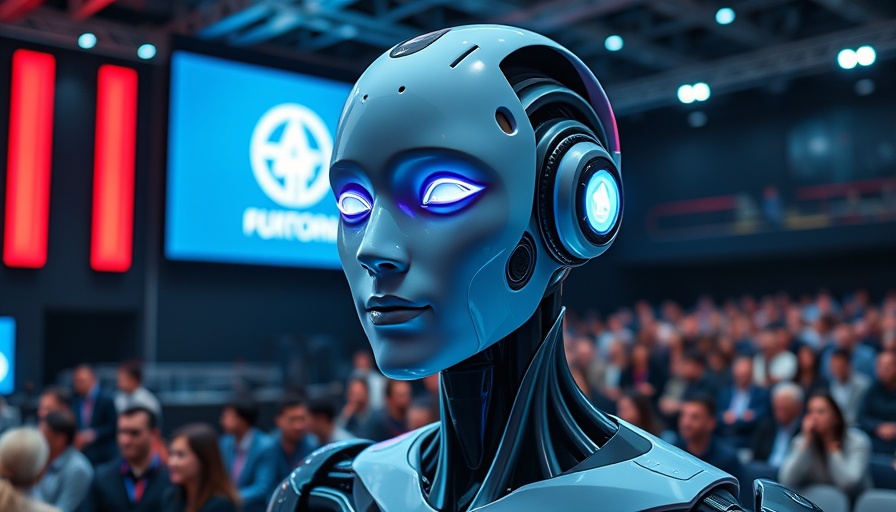
The Rise of DeepSeek R1T2 Chimera: A Disruptor in AI
Advancements in artificial intelligence (AI) often come with a barrage of buzzwords and intricate models, but the emergence of DeepSeek R1T2 Chimera has stunned experts by deviating from conventional training regimens. This new model boasts a speed that is twice that of its predecessor and insatiable intellect without undergoing lengthy GPU training. With a method heralded as the assembly of experts (AoE), DeepSeek R1T2 harnesses the strengths of its predecessors to form a model that is fast, compact, and efficient—qualities that may redefine the future of AI.
In New DeepSeek 'Chimera' SHOCKED Experts 2X Faster and Smarter Than Original DeepSeek, the discussion dives into the innovative assembly of experts, exploring key insights that sparked deeper analysis on our end.
Understanding the Assembly of Experts (AoE)
At the core of DeepSeek’s innovation is the assembly of experts technique, a radical departure from traditional AI model enhancement methods. Instead of the routine data collection and extensive GPU training, AoE amalgamates the best features from established models—specifically R1, V3, and R10528—without extensive retraining. Engineers use an interpolation method to merge weight tensors from each parent model, effectively creating a new model that capitalizes on their combined efficiencies while maintaining minimal processing overhead.
Why the Speed and Efficiency Matter
DeepSeek R1T2 delivers rapid responses, excelling particularly in environments where time is critical. The model performs on benchmark tests approximately twice as fast as its predecessor, R10528. This heightened efficiency doesn’t just serve as bragging rights; it translates to reduced operational costs and lower barriers for businesses seeking to implement AI solutions at scale. Moreover, because the model activates only a selection of its 671 billion settings per interaction—around 37 billion for each word—it reduces the token expenditure significantly, allowing organizations to do more with less compute power.
Evaluating Model Quality and User Experience
Such impressive speed could raise concerns about output quality. Despite the innovative merging of models, the TNG team rigorously tested R1T2 against standard assessments, revealing that its performance is comparable to, if not exceeding, its predecessors. In practical use, early adopters reported enhanced responsiveness and clarity in the model's output, particularly during complex tasks requiring structured logic, like mathematics. This balanced blend of speed and precision marks R1T2 as not merely a technical upgrade but a robust solution for various industries.
DeepSeek’s Future: Opportunities and Considerations
The implications of R1T2 extend beyond technological breakthroughs; it also sets the stage for future advancements in AI model development. While DeepSeek leverages AoE to offer efficiency, it brings forth the notion of a parameter valley—a revelation suggesting that diverse combinations of models can work synergistically, leading to a myriad of viable outputs instead of a binary good-or-bad quality metric. In essence, DeepSeek allows access to a wider array of customizable tools for developers eager to harness unique traits from different models seamlessly.
Environmental Impact and Operational Efficiency
In addition to performance metrics, environmental considerations have become increasingly critical for AI technologies. DeepSeek R1T2’s architecture reduces energy consumption by minimizing memory transfers due to its efficient token usage. When coupled with the operational savings accrued from running a less resource-intensive model, this shift positions DeepSeek as a frontrunner in sustainable AI, providing a solution that not only meets the current demand for processing power but mitigates carbon footprints as well.
Leveraging DeepSeek for Real-World Applications
For businesses across diverse sectors—from customer support centers to high-stakes finance and healthcare—the ability to integrate DeepSeek R1T2 with existing frameworks is significantly advantageous. The MIT license empowers developers to implement this revolutionary model without concern for licensing drama. The faster response times offered by R1T2 are particularly beneficial in real-time applications where lag can interfere with user engagement and satisfaction.
The Bottom Line: Are We Ready for the Next Wave of AI?
As R1T2 showcases the potential of aggregating expertise from varied models while emphasizing speed and efficiency, it raises a pressing question in the AI community: how far can we push the boundaries of what artificial intelligence can achieve without traditional retraining? The advent of this Chimera model not only teases the possibility of smarter AI solutions but suggests a paradigm shift in how developers will approach creating and learning from AI frameworks in the future.
 Add Row
Add Row  Add
Add 




Write A Comment